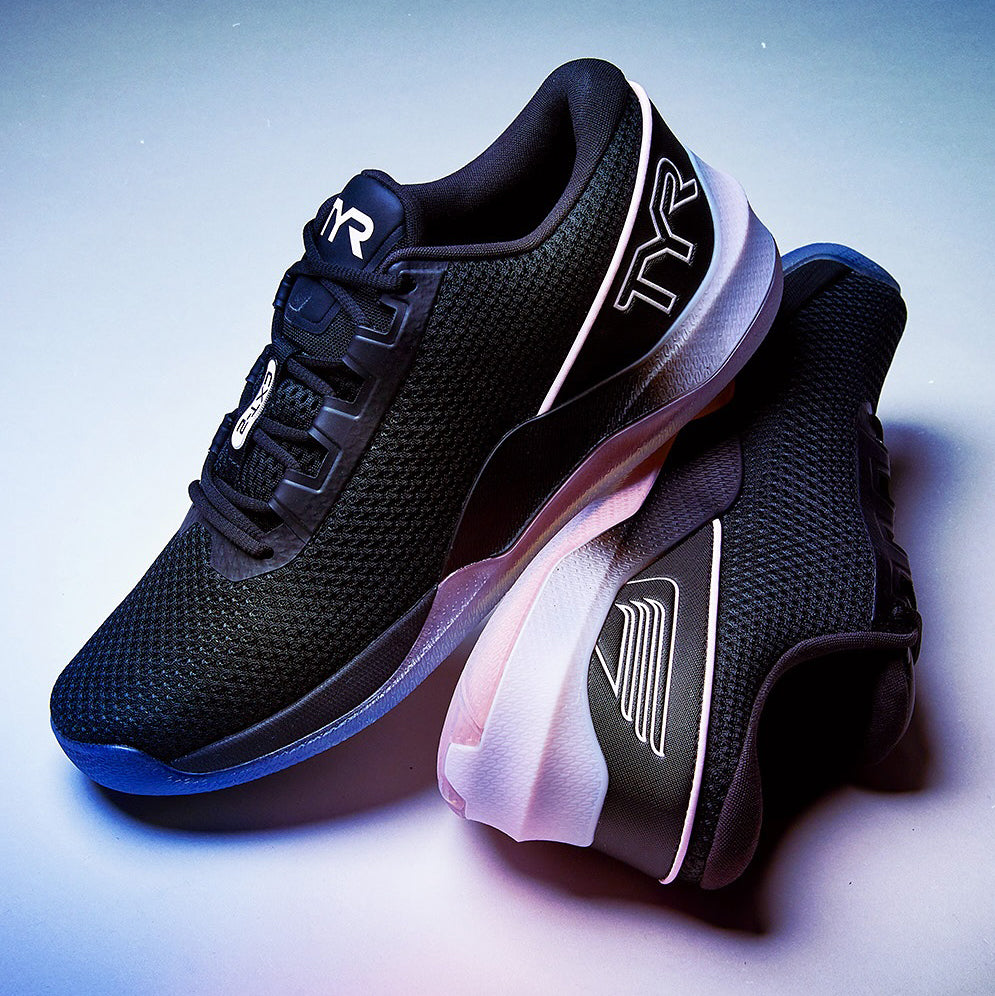Save over $30 on these select Men's Nike Free Metcon 6 through 12/13/25.
"What's your Fran time?" This question is asked in CrossFit boxes from New York to New Zealand and everywhere in between. Fran is one of those special WODs that pushes you to your physical and mental limits; and where shaving off even 1 second is a huge success. Try applying these 8 easy fixes to your training and see if you can PR the next time you do Fran.

This WOD is all about how efficient you are with thrusters. Period. Yes, if your kip isn’t going great, you might not have a fast cycle time with the pull ups and have an overall time a few seconds longer, but the battle is won or lost by how well you do at thrusters.
Depending on a person’s strength, he or she can display a host of problematic areas in the thruster. In fact, it’s easy to fall into the faults listed below or forget some of the basics when you're in the heat of the workout. Don’t feel bad, just look for your weaknesses so you can systematically improve them.
To find the weaknesses in our movement, we have to look at the entire kinetic chain. We begin our assessment by looking at the feet and continue going up the body. If we have a system for assessment, we can easily discern possible faults instead of haphazardly observing an athlete or ourselves.
- Good form: Feet hip-width apart. Dropping the hips back like trying to sit in a chair.
- Verbal cues: Sit down. Don’t over think it.
- Muscle group breakdown: Eccentric contraction of the bilateral hamstrings. Bilateral mentioned for emphasis on even distribution of weight through the legs.
- Good form: Elbows almost perpendicular with the floor. Rack position maintained through descending and ascending portion of the squat.
- Verbal cues: Elbows high.
- Muscle group breakdown: Front deltoids, and proper range of motion of wrist flexors.
 The rack position is maintained in order to harness the kinetic energy from the squat and use that force in the ascending portion of the thruster. Because the bar is resting on the front delts, the energy from the squat initiates the press. The arms only finish the movement into lockout. If a good rack is not maintained, the thruster becomes segmented and there is an overall loss of power. The exact rack position can also be influenced by the length of the athlete’s radius and ulna, which make up the forearm.
The rack position is maintained in order to harness the kinetic energy from the squat and use that force in the ascending portion of the thruster. Because the bar is resting on the front delts, the energy from the squat initiates the press. The arms only finish the movement into lockout. If a good rack is not maintained, the thruster becomes segmented and there is an overall loss of power. The exact rack position can also be influenced by the length of the athlete’s radius and ulna, which make up the forearm.
- Good form: Weight in the heels, not the toes. Driving power through the legs. Don’t make the arms do the majority of the work.
- Verbal cues: Head and chest up. Core engaged.
- Muscle group breakdown: Quadriceps and core muscles, including rectus abdominals and erectus spinae.

Lock Out Overhead
- Good form: Tucking the head with the barbell descending. Core stability during descent.
- Muscle group breakdown: Shoulder girdle muscles including upper trap, pec minor, levator scapulae and shoulder rotator muscles. Also supraspinatous, infraspinatous, teres minor, and subscapularis.
Now that you’ve gone into the fine details of your thruster, we need to go back to looking at the workout as a whole. There are four other aspects of strategy and body mechanics to be addressed. These are applicable not just to Fran, but to all workouts you do.
With shortness of breath a host of problems can occur such as decreased strength, dizziness, and even mental fatigue. But there is a strategy that can be deployed to counteract it.
What is it? Pursed lip breathing. An old technique that consists of breathing in through the nose and out through your mouth. That seems like a no brainer! But have you ever noticed how an athlete breathes while doing a hard workout? The smooth breathing goes out the window and it’s replaced with gasping gulps of air.
- Practical application: Utilizing inhalation at the top of the lift (like when the bar is overhead and the chest cavity is elongated); using that diaphragmatic breath to create intra-abdominal pressure which increase stability of the spine.
- Quick Facts: Pursed-lip breathing increases oxygen saturation levels through the blood, causing an improvement to circulatory system and allowing the lungs to work more effectively. With increased circulation through the body, mental awareness and comprehension becomes optimal. This all occurs by controlling your breathing.
This WOD takes your mental fortitude and makes you dig deep, especially during the set of fifteen. That is the make or break round. Setting up cognitive cues during the workout is crucial.
- Fight the voice telling you to set the bar down. Tell yourself, "I'll set it down after this rep." Fight for one more rep.
- Yes, we know this workout is for time. Yes, you should move fast and have intensity. But once fatigue sets in and you start to put the bar down more frequently, it’s time to reevaluate how you’re going to finish this workout without dying.
- When every second counts, your rest breaks become liabilities. Instead of resting without measure, count three seconds and then approach the bar again. Pick an attainable number for rest breaks and then decrease it.
- Once you start to struggle and perform reps with terrible mechanics it is time to stop again and recover. Sloppy mechanics hurt not only you, but they also establish muscle memory based on that poor movement, and this can lead to injury.
If exaggerated or involuntary trunk flexion occurs, it means your midsection is no longer erect or straight during the movement. When your core and mid-line are not properly aligned, your breathing quickens. Your poor posture compresses the diaphragm, causing a lack of blood flow to the extremities. All this makes it extremely difficult to move effectively under stress.
Not to mention, you’re also now in a poor rack position, which will cause you to expend more energy controlling the weight with your upper extremities and take away energy that could be used for the push press.
If you cannot perform a strict pull up, you have to develop that skill. Although I love me some kipping pull ups, your foundation should always be a strict pull up to build overall strength in the latissimus dorsi. Kipping techniques can be introduced once two sets of six to ten reps of strict pull ups can be performed. Athletes can start with partner pull ups, jumping pull ups with a controlled descent, and ring rows in different positions to increase difficulty.
The checklist and tips above should be broken down across as many training sessions as needed. Try to address one area per session.
Now that you have the blueprint on how to improve the crucial area of the thruster, do not spend too much time working on areas you already good at. Work on the portions of the checklist you struggle with.
About the Author:
DaKari Williams is a licensed Physical Therapist Assistant, Massage Therapist, Chiropractic Assistant, and a CrossFit Level 1 certified trainer. He is a graduate of Ann Arundel Community College and Carroll Community College. DaKari also serves as the massage therapist for an NPGL team, the DC Brawlers. He authored this article for Breaking Muscle as part of their WOD Mechanics series.








